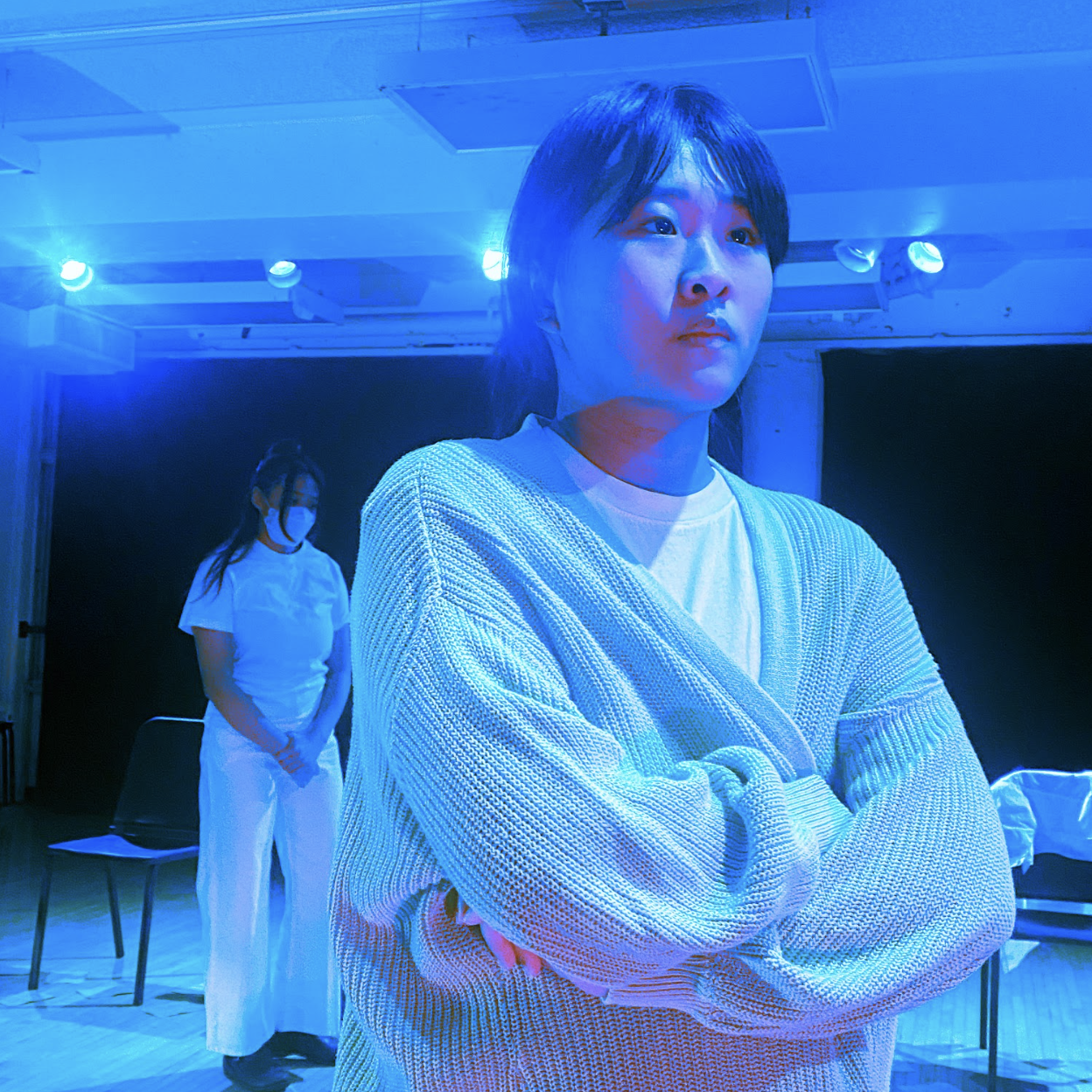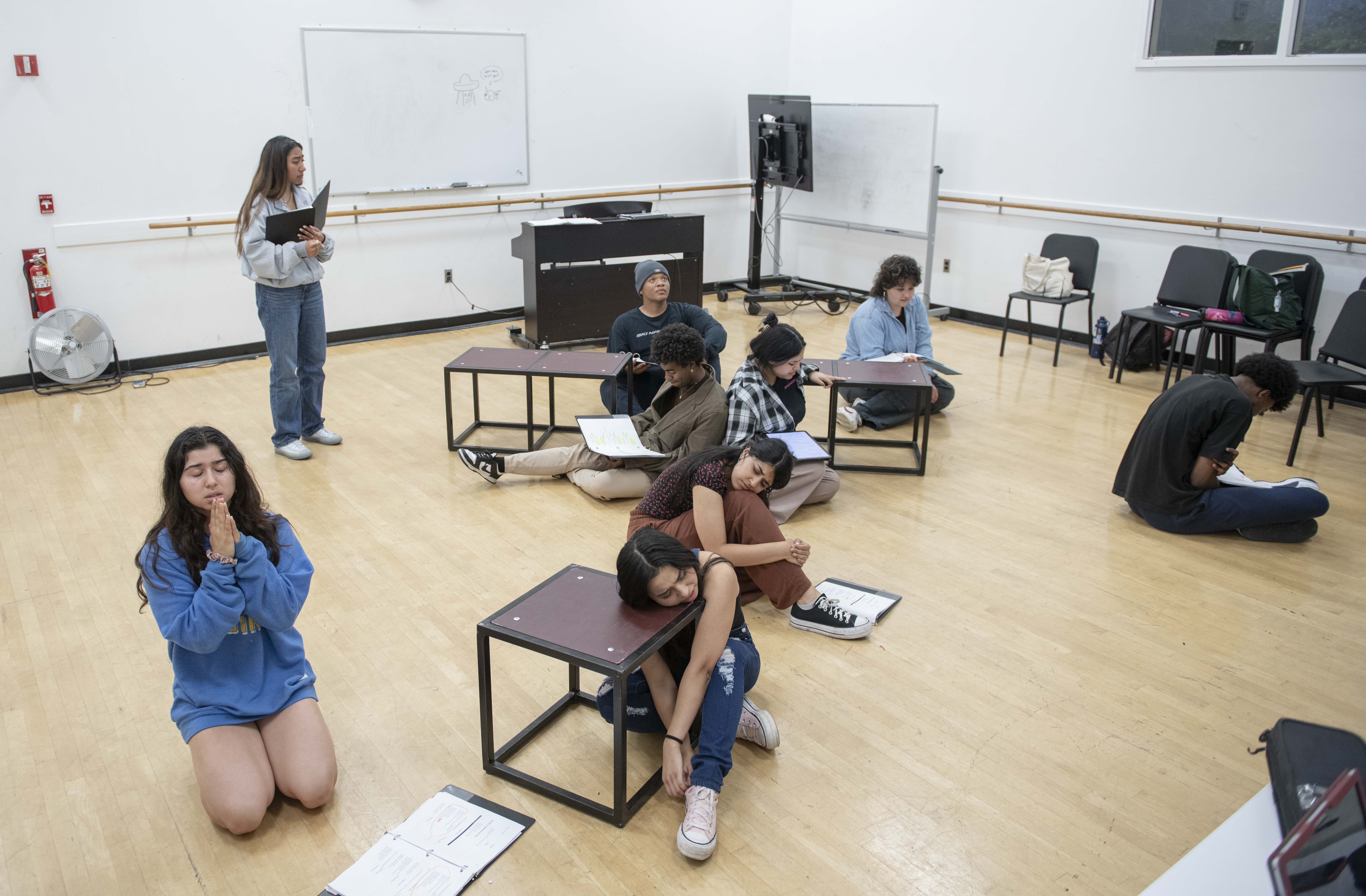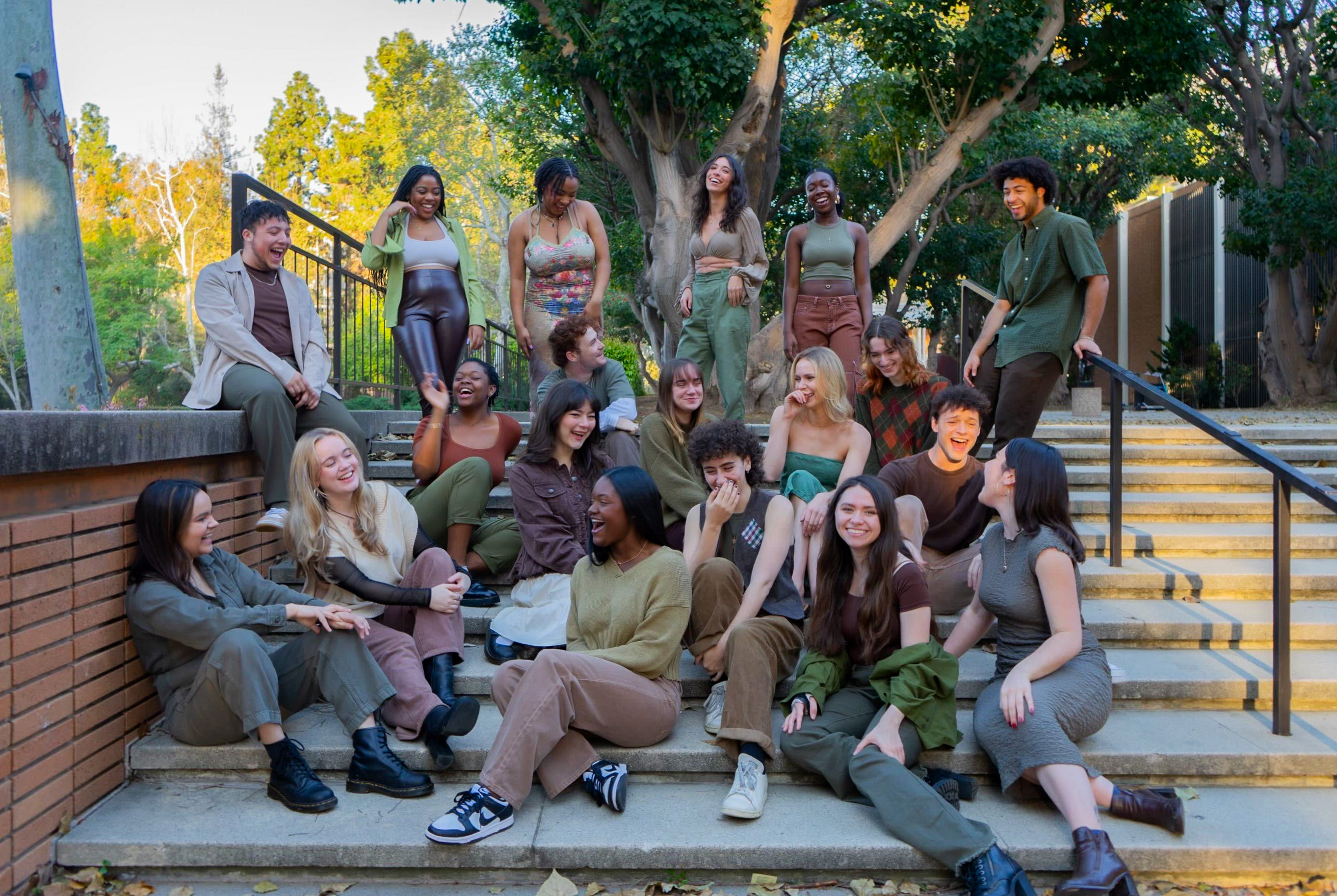‘Fish in the Tank’ squares in on depths of intimacy within institution

Pictured are costars Emily Lee playing Echo (right) and Lauren Lau playing Rae (left) in a rehearsal of the student production “Fish in the Tank.” The play will show at Macgowan Hall on Saturday and Sunday. (Courtesy of Tyler Neufeld)
“Fish in the Tank”
Untitled Theatre Company
Macgowan Hall
Dec. 7 to 8

By Reid Sperisen
Dec. 7, 2024 12:14 p.m.
This post was updated Dec. 7 at 12:45 p.m.
This weekend, UCLA theater audiences will be invited to dive into the fish tank.
The student-run Untitled Theatre Company will hold three free staged workshops of the original student play “Fish in the Tank” at Macgowan Hall, with one showing Saturday and two Sunday. The one-act play was written by fourth-year theater student Cerulean Long, who said she began working on the story as part of an assignment for a playwriting class last spring quarter. Long, who will also be directing a piece of their own for the first time, said “Fish in the Tank” is partially autobiographical and is inspired by both their upbringing as an international student from China and navigating of their identity as a queer person.
“What prompt(ed) me to start writing this is a confusion and curiosity about individuals’ relationship with the system and the institution,” Long said. “I want to explore how intimate relationship(s) can both be formed and also be oppressed by the system and institution.”
[Related: In ‘The Courage to Right a Woman’s Wrongs,’ female narratives take center stage]
Long said she is often drawn to the tension between individuals’ identities and the systems they live under, especially in such intimate relationships. However, Long said they do not start with the themes of their works when setting out to write a poem, story or play. Instead, she said she prefers to create a sparse outline with some rough concepts to form the skeleton of the work, as she did with “Fish in the Tank.” Long said their goal with “Fish in the Tank” is to present a coming-of-age story of two queer characters that begins in an oppressive boarding school environment, but there is still a degree of intentional ambiguity they have tried to cultivate onstage.
The play only features two actors who will portray the characters Echo and Rae, Long said. At first, Long said she identified more closely with Rae, especially when first writing the script and reflecting on her own experiences. However, over the course of the play’s preparations, Long said the characters have since become more independent of Long themselves and their autobiographical experiences. Finding who the characters are was made possible by Long’s realization that she can identify pieces of herself in the story while allowing the story to exist on its own, Long added.
“This also is probably the most vulnerable piece I’ve ever written, I would say, because it’s so close to my heart and coming from a place that is really vulnerable and deep about identity,” Long said. “I can see a lot of parts of my own thought process or questioning, or my own traces and marks growing up in these characters and in their storyline, but they grew to be really independent characters that are independent of … autobiographical rules.”
Third-year neuroscience student Emily Lee is portraying Echo and said she took the role despite her other extracurricular commitments in order to work under Long’s direction again. After joining the project in October, Lee said the first few weeks of rehearsals involved participating in edits of the script with Long as each actor discovered how they connected to their character. Long’s approach as a director embraces developing the characters alongside the actors and not having the roles be strictly formulated, Lee added.
“She leaves room for a lot of unknowns,” Lee said. “There’s room for questions, which I do really like in the process – that not everything is answered. Not everything has a definitive ending, the way that there isn’t in life either.”
Lee said the story told in “Fish in the Tank” is not tied to a specific nation or location but is in an ambiguous place the crew has called “Fish World” that still bears some resemblance to American society. They said the play’s events follow the relationship between Echo and Rae across three points in time, presenting scenes when the characters are 13, 15 and 21 years old. At the beginning of the play, Echo is an inquisitive but introverted character, Lee said. When her character is 15, Echo has more self-confidence and is more playful with Rae, whereas Echo is more assertive about what she wants when she is 21, Lee added.
When further comparing the characters, Lee said they were intrigued by the extent to which institutions affected Echo and Rae. Echo is less affected, Lee said, as her perception acknowledges that the boarding school might feel oppressive in the moment but will not last forever. On the other hand, Lee said Rae is a character rooted in a belief in fate and is therefore more sensitive to the institution and feeling trapped within the metaphorical tank.
To capture the perception that both the actors and the audience could part of the tank, Long said the staging of the play is purposeful. Long said there will be a square stage with the audience surrounding the actors on all four sides. This setup is meant to evoke the sense that the audience is creating a tank that the actors inhabit, with the symbolism that the audience is like the institutional walls the characters interact with, she added.
The play’s sound design was handled by Zoe Lai, a third-year theater student who said she accepted Long’s invitation to compose for “Fish in the Tank” because she resonated with the themes of being a queer person from Asia. She and Long are from the same part of China, and Lai said she was drawn to the ambience and coastal imagery Long incorporated into the play. The music for “Fish in the Tank” is a piano composition that draws influences from classical music, Lai added.
“I want to create this sort of wavelike movement during the music,” Lai said. “But it also keeps coming back to itself – the motif – with slight variations, only to symbolize that … after all these years, the obstacles are still there. They haven’t changed anything, but they still hold the same feelings for each other.”
[Related UCLA alumnus Haleyann Hart brings heart both on and off stage]
Regarding the play as a whole, Long said they are aiming to balance both dystopian elements and realism so that the audience can interpret the events of “Fish in the Tank” as tangible and plausible. Long said the majority of contemporary American theater and the theater industry is strongly identity-based, but she wants attendees of the play to fill in their own stories rather than interpret it as exclusive to the experience of a specific demographic. The intimate nature of the theater and communal staging will help accomplish this goal by making the audience feel included and connected in the performance, Long added.
“I want the audience to feel that they could become the fish, and the fish are one of them,” Long said. “I don’t want people to come in with the assumption that this is a critique of some specific education system, political system or whatnot. I want it to be more up to anyone’s own interpretation, and I want them to bring their background – their own understanding of the story – to fill in the blank.”



